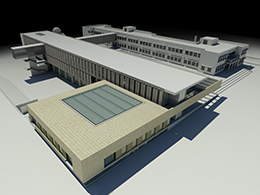STUDENTS PROJECTS
PROJECTS2013
Student : Evaggelou Dimitris
Surpervisor : Giftopoulos Stavros, Konstantinidou Elena
N.T.U.A
Presentation date : April 7, 2014
Quick description
This diploma project deals with the historic school complex of Laniteion. Through selected interventions, documented demolitions and a comprehensive synthetic approach, it is attempted to heal the wounds of the past and the poorly organized extensions or additions. The goal being to create a harmonious link between the past and the future, of a polyvalent educational establishment that preserves the historical memory of the space.
Main text
Laniteion is a place which reflects the modern history of the city of Limassol , and a place charged with images, feelings and memories of the past. Historically the secondary education in Limassol dates back to 1819 with the founding of the first one-year "Greek School". Originally, private homes and facilities of the Metropolis occasionally hosted the school. In the dawn of the 1940's, shortly before the outbreak of the W.W 2, the small town begins to spread beyond the compact settlement near the port (Tab.1 / 02). The rising number of new studends, increases for the school building's requirements. In 1945 a leader of commerce and industry, as well as a great benefactor of the city, Evagoras Lanitis announces a big donation for the construction of modern school building close to the then city's limits (Tab.1 / 02). The first wings delivered in 1951 and a year later, following his death, the "Greek High School of Limassol" was renamed to "Lanition GREEK SCHOOL" in his honor.

The next few years, the relentless British attitude towards the national question of the Union with Greece, is succeeded by the liberation struggle of EOKA 1955-1959.The school population being first in the forefront, in December 1955 the famous "Battle of Laniteion" takes place and leads to it being closed for a year. In 1960 the agreements of Zurich and London lead to a treaty regarding the independence of Cyprus, but intra problems undermine peace. In 1974 the Turkish invasion brings in a large wave of refugees settled in Limassol. With the population doubling abruptly the student population follows . Since then, continuous non architect additions and short -visioned alterations are being made to cover requirements, altering its original character and the quality of space, built or open (Tab.2 / 01) Currently in the complex 1 (spatially distinct), one Primary, a secondary school and two high schools (Lanition A and B) are operating, as shown in the first chart, billboard 2/03. Based on future intentions of the Ministry of Education the two high schools will be consolidated and the building and outdoor spaces of the high school will be enriched to follow, an emphasis in the lesson of music and sports. The proclamation of a prior architectural contest (2011) was a vivid base of evidence for buildings needing to be demolished and others where there was still a choice.
The purely personal Scenario for the approach and reconstruction Laniteio, apart from the vital inclusion of the site to the city's urban tissue, lays particular emphasis on the upgrade of the facilities indoors as well as outdoors.

The approach for the master plan design was a continuous in-situ reading of space, with regard to the visual and kinesthetic perception that one can have as they browse through this area of 120 hectares (including athletics stadium, etc.). The synthetic scenarios for the landscape were also based on sociological and behavioral analysis of the students. Several open spaces, types of patios and large terraces used as more 'public' spaces, spaces with crossover movements where one is easily exposed, ultimately served as passages,. On the contrary, the smallest recesses and corners that offer a certain "privacy" worked best as stops. Small groups of students always need their personal space and the satisfaction of their curiosity, ensured by the visual contact with the surrounding area. Beyond all that, the dimension of microclimate was to be significantly important, turning the (back) north courtyard a rich living space, since the existing green spaces enjoy the shading of the elongated building blocks.
Regarding the interventions and new facilities added, there was an attempt not to volumetrically downplay the historical volumes retained, yet to declare a modern architectural proposal.

For the New high school the building volume remaining, covers a large part of the building program, so there are mostly targeted points of interventions and additions, both in built and open spaces eg New library, unification of the movements on the first floor etc.
For the former Lanition high-School B, which is converted to a new secondary school, the requirements are more. The emphasis is laid on installations required for Music classes (studio design, audio, audiovisual, etc.). Having studied the light tensile structures namely Fabric Membrane structures, one can say that the projects and the lessons of Frei Otto and Shigeru Ban are more than ever relevant and legitimate. The light construction of the amphitheater (160 seats) is studied according to the requirements for good acoustics. The concave of the impregnated membrane, facing inwards, (PTFE or PVC) act as reflectors and rear with shaped holes as absorbent. The permeability of the illumination on the film gives even more advantages.
1. Η ακουστική μελέτη έγινε κατά αρκετά μεγάλη προσέγγιση σύμφωνα με τους τύπους και τις υποδείξεις του βιβλίου «Ακουστικός Σχεδιασμός Χώρων» συγγραφέας Νίκος Τσινίκας.


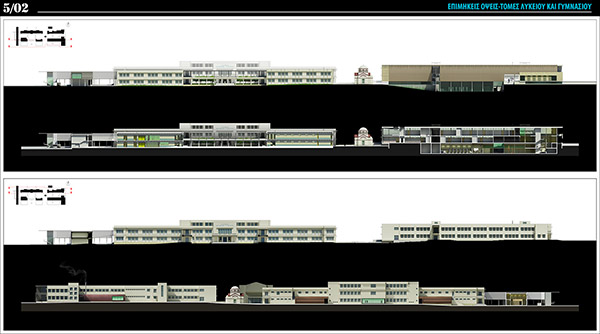
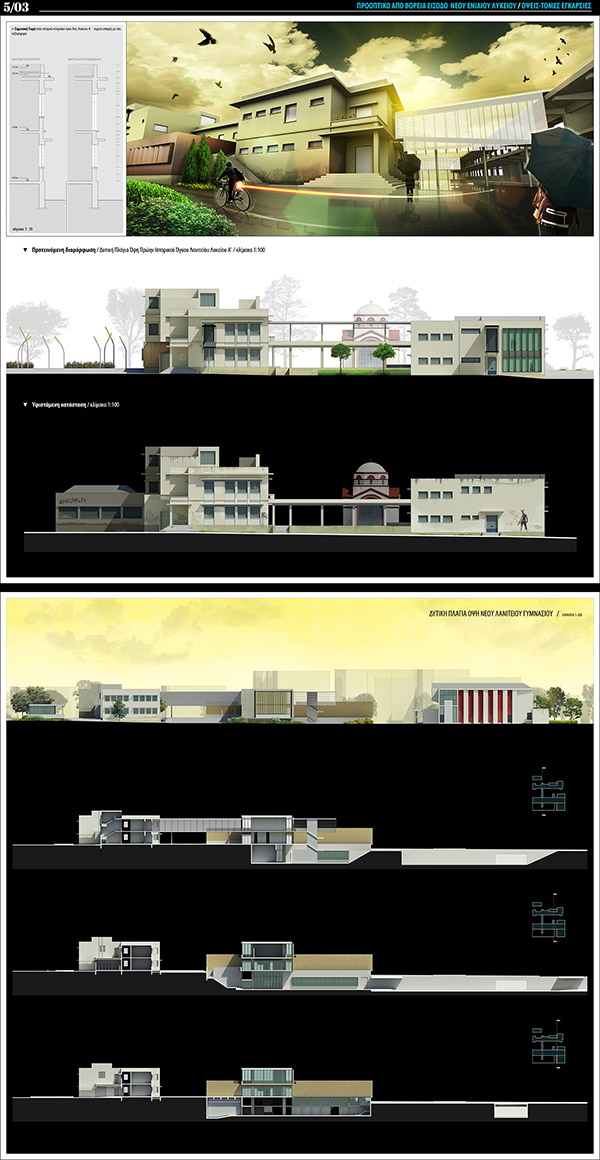
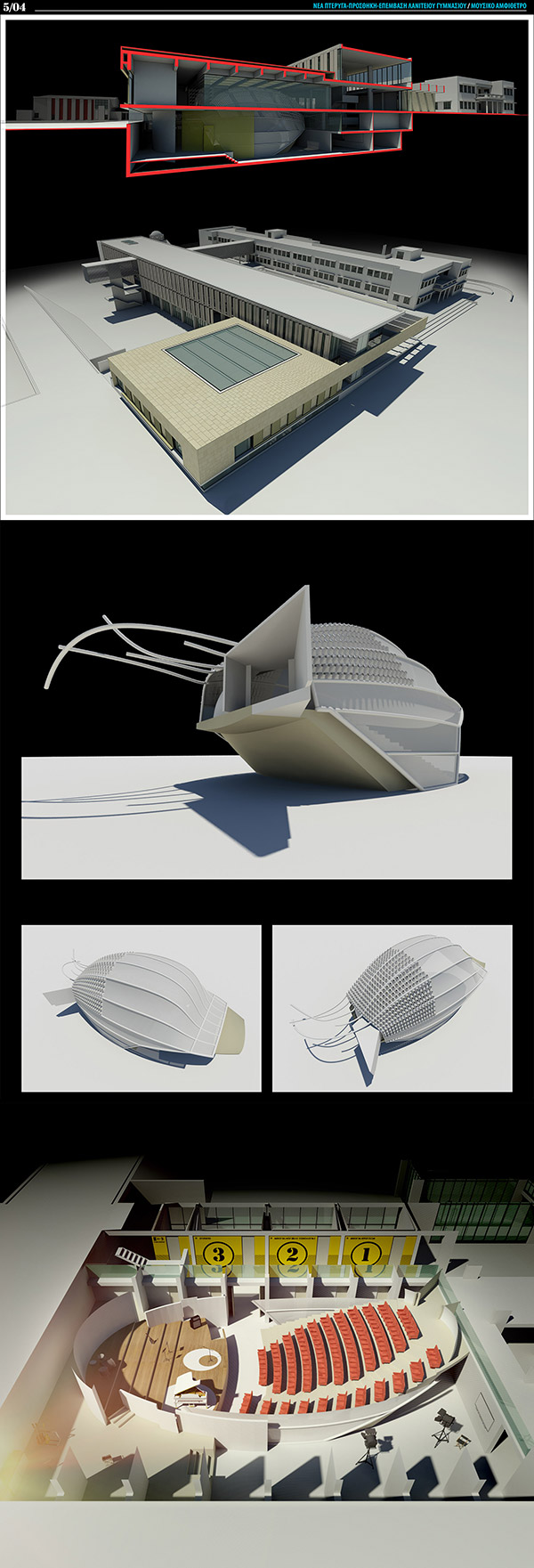
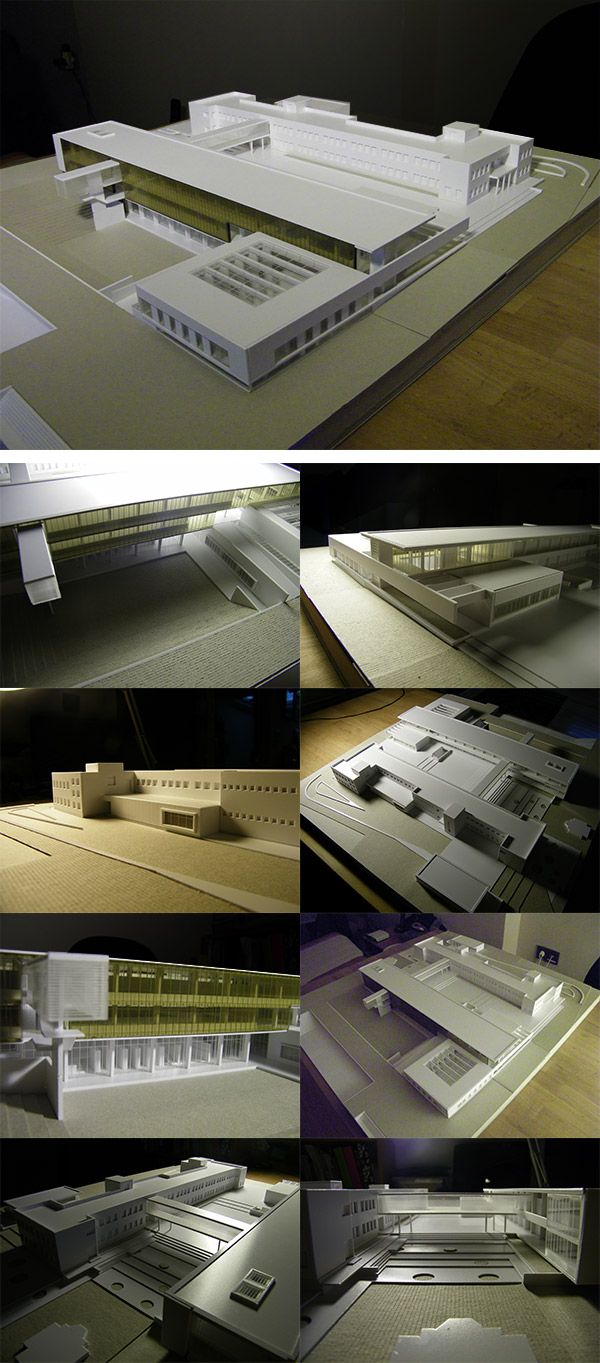
Related articles:
- Music high-school in Plato’s Academy ( 23 June, 2009 )
- ARSAKEIO OF TIRANA GREEKALBANIAN SCHOOL ( 23 June, 2010 )
- ARSAKEIO OF PATRAS ( 15 October, 2009 )
- School of architecture Patra ( 23 July, 2010 )
- Education for production_ School of industrial design engineering on Iera Odos ( 08 April, 2011 )
- Μodel Εducational Unit in Kozani ( 31 January, 2011 )
- Student Residence in Lofos Sikelias Neighborhood ( 02 March, 2011 )
- Experimental educational complex in Tagarades, Thessaloniki ( 03 March, 2011 )
- Independence Spaces - Hazelwood School Glasgow ( 01 May, 2011 )
- Tellus Nursery School ( 29 December, 2013 )
- Pio Baroja Nursery, learning from playing ( 07 June, 2014 )
- School center in Ambelokipi (High School - Μidle School) ( 20 March, 2012 )
- Concrete production plant reformation ( 05 April, 2012 )
- Primary school ZV Zavelput ( 14 April, 2012 )
- International architectural competition. Innovative, bioclimatic, European school complexin Crete, Greece ( 03 February, 2013 )
- Raw Inside ( 28 February, 2013 )
- Nest and flight ( 18 April, 2013 )
- Dance and Music Art Center (DaMAC) in Klafthmonos Square ( 07 July, 2013 )
- Artistic high school near the House for the Elderly in Athens ( 20 September, 2013 )
- Diffuse school in the urban tissue of Patras ( 20 April, 2014 )
- Towards a social school ( 11 November, 2014 )
- Greek High-School, Laniteion ( 17 March, 2015 )
- An alternative music academy ( 25 March, 2015 )
